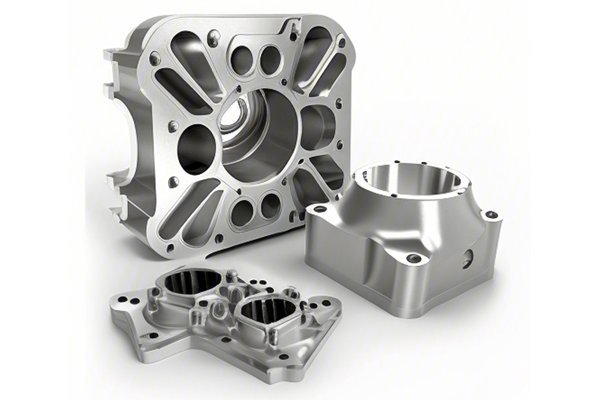Did you know that the global CNC machining market is expected to reach USD 100 billion by 2026? This remarkable growth reflects the increased demand for precision, efficiency, and adaptability in industrial production, particularly for large products. As industries expand and evolve, manufacturers are continuously faced with the challenges of producing larger, more complex components without compromising on quality or output speeds. With the rise of technology, CNC (Computer Numerical Control) machining has emerged as a powerful solution for tackling these challenges. In this comprehensive guide, we will delve into how CNC machining can enhance the production of big products, explore its numerous benefits, and provide actionable insights for businesses looking to harness this technology.
Understanding CNC Machining
First, it’s important to clarify what CNC machining is. CNC machining refers to the automated process of controlling machine tools via a computer. This technology includes a wide range of manufacturing processes, including milling, turning, drilling, and grinding. One of the defining characteristics of CNC machining is its ability to create highly complex and precise parts quickly and consistently.
The Need for Efficient Production of Big Products
As industries such as aerospace, automotive, and heavy machinery evolve, the demand for larger components has surged. However, creating these components comes with inherent challenges:
CNC machining steps in to answer these concerns effectively.
Advantages of CNC Machining for Large Product Production
CNC machining significantly enhances precision, allowing manufacturers to create large parts with exact specifications. The ensuing high repeatability means that regardless of the size, you can produce numerous components that fit together perfectly.
CNC machines operate with high-speed efficiency. They can perform multiple machining operations in a single setup, dramatically reducing the time taken to manufacture large parts compared to traditional methods, which often require several setups.
CNC machining minimizes waste by utilizing advanced software that optimizes tool paths, ensuring that material removal is as efficient as possible. This leads to cost savings, particularly significant for expensive materials used in large product manufacturing.
Most CNC machines can operate autonomously and can be reprogrammed or adjusted to accommodate new designs, making them incredibly flexible. This allows manufacturers to pivot quickly as project requirements change.
CNC machines can replicate the same machining process countless times without deviation in quality. This consistency ensures uniformity across all produced items, essential for large assemblies which require precise fit and function.
Modern CNC machines can create intricate shapes that would be impossible or prohibitively costly with manual machining. Whether it’s for aerospace components or large industrial machinery, CNC technology empowers manufacturers to push the boundaries of design.
Challenges of CNC Machining for Large Products
While CNC machining presents numerous advantages, it does come with its challenges, particularly when it comes to larger products.
Investing in CNC machinery and the necessary software can be a significant upfront expense. Businesses need to assess their return on investment carefully.

Employees may require specialized training to operate and maintain CNC systems effectively. Adequately managing this transition is crucial.
CNC machines, particularly when used heavily for large product manufacturing, demand regular maintenance to avoid downtime, impacting production efficiency.
Best Practices for Optimizing CNC Machining
To maximize the potential of CNC machining for large product production, consider implementing the following best practices:
Invest in Quality Machinery and Software
When venturing into CNC machining, selecting high-quality machines that can handle large products efficiently is paramount. Pair your machinery with robust software that allows for high levels of customization and real-time monitoring.
Design for Manufacturability
Involve CNC technology experts early in the design stage to create designs that are optimized for machining. This will streamline production processes and potentially cut down on costs.
Regular Maintenance
Implement a rigorous maintenance schedule to keep machines running optimally. This includes regular check-ups, cleaning, and software updates to prevent unexpected breakdowns.
Continuous Training
Invest in ongoing training for your workforce to improve their proficiency with CNC technology. This will not only minimize errors but also enhance team confidence in operating these advanced machines.
Monitor Performance Metrics
Data-driven decisions lead to enhanced productivity. Regularly monitor KPIs such as machine utilization rates, production times, and defect rates to identify areas for improvement.
Case Studies
A leading aerospace manufacturer faced significant challenges producing large components such as fuselage sections. By transitioning to CNC machining, they improved production efficiency by 40% and reduced waste significantly through precise material handling.
An automotive company specializing in large engine components leveraged CNC technology to achieve tighter tolerances that enhanced engine performance. This shift not only improved product quality but also increased sales due to favorable market feedback.
A heavy machinery manufacturer utilized CNC machining to quickly produce large parts like hydraulic cylinders. Through automation and real-time data analysis, they were able to reduce production cycles from weeks to merely hours.
CNC machining stands out as an invaluable asset for the production of large components, driving forward efficiency, precision, and flexibility. By embracing this technology, manufacturers can respond effectively to the increasing demands of global markets while maintaining high standards of quality throughout their production lines.
As industries evolve, the integration of CNC machining into manufacturing processes will continue to be imperative for staying competitive. The key takeaways discussed—such as precision, automation, and continuous improvement—underscore why businesses should not just consider CNC machining as a tool, but as a critical foundation to their manufacturing strategy.
Ultimately, understanding and adapting to CNC machining technology can significantly influence a business’s success in producing big products efficiently, making it a vital topic for manufacturers intent on growth and innovation. If you’re considering CNC machining for your operations, remember: efficiency and precision today lead to profitability tomorrow.






